

The original Scott Base looking north across the sea ice in 1960.

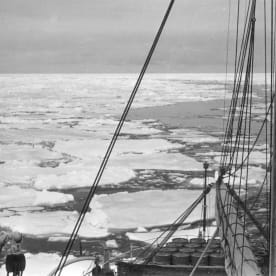
From the flying bridge, looking over the avgas drums to the pack and the twisting channel showing how the Endeavour kept turning to follow the easiest path through the ice.


The covered-way looking towards the mess hall with power cable duct right-hand side and food boxes on the left. This winter photograph shows a thick layer of frost lining the corrugated-iron tunnel.


The mess hall, A-hut, where we were greeted and given a hot cup of coffee. (Jim Lennox-King, 1960)


The carpenter carefully decorating Jim and John’s cake with halibut oil capsules.
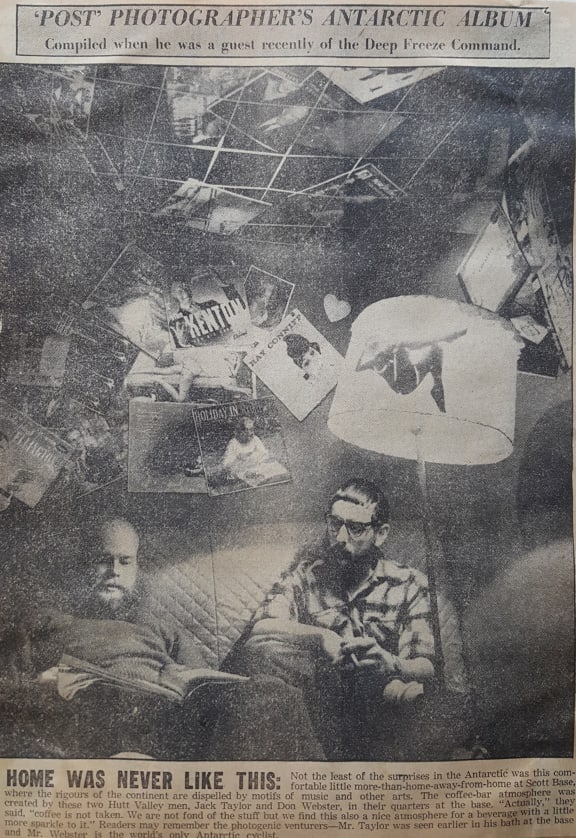

Jack and I posing in the coffee bar. (Evening Post, 1961)


A drum hoisted and about to roll into the thawing tunnel using the overhead gantry. (Bob Buckley, 1960)


One of the Ferguson tractors and sledges used in transporting the Auroral Radar to Arrival Heights.


The next roof panel is lifted into place.


Drilling the hut tie-down supports using the Weasel as shelter from the wind.


Here I am changing the differential in a Weasel. This was the photo that caused me some trouble.


Riding my bike behind Scott Base in the summer of 1959/60.


We often got a closer view when replacing a track. This was relatively easy once the Weasel had been jacked up, but it did require a bit of brute force. This Weasel has had the flotation tanks removed and the heater mounted at the front.


The Weasel converted for snow collection. (©Antarctica New Zealand Pictorial Collection, 65-19)
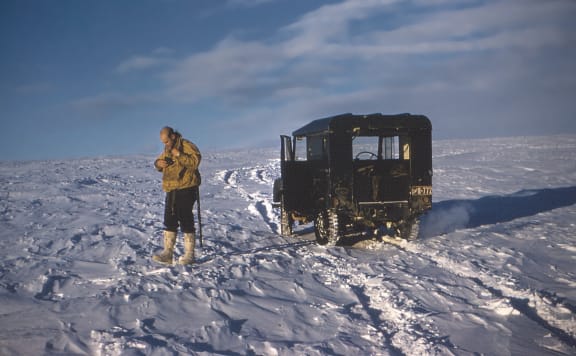

The Landrover showing the tracks cutting through the surface crust of the snow surface


Riding my bike behind Scott Base in the summer of 1959/60.
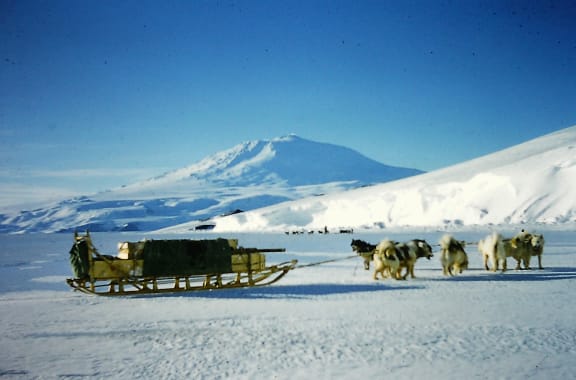

A dog team and sledge on the sea-ice with Mount Erebus in the background. (Bob Buckley, 1960

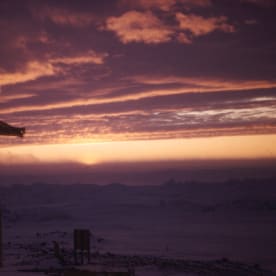
Looking south during the prolonged sunset with the flagpole and AA sign in the foreground.


Colin Jenness catching up on the news, sitting in front of a pile of newspapers. The rest of the papers from the first flight were stacked against the opposite wall. (Colin Bailey, 1960)


15 After an early spring blizzard the front door is opened to a build-up of snow and two curious pups. (Colin Bailey, 1960)
Don Webster knows a little bit about isolation and how to handle it, he spent a summer and winter in the 1960s in Antarctica, working as a technician at Scott Base.
He's now published a book called Scott Base Antarctica: The Early Years, which is jam-packed with photographs and research about how the base was set up and how it evolved over time.
He joins Kathryn to share details of what life was like on the ice while "wintering over" - when night lasted all day.









































